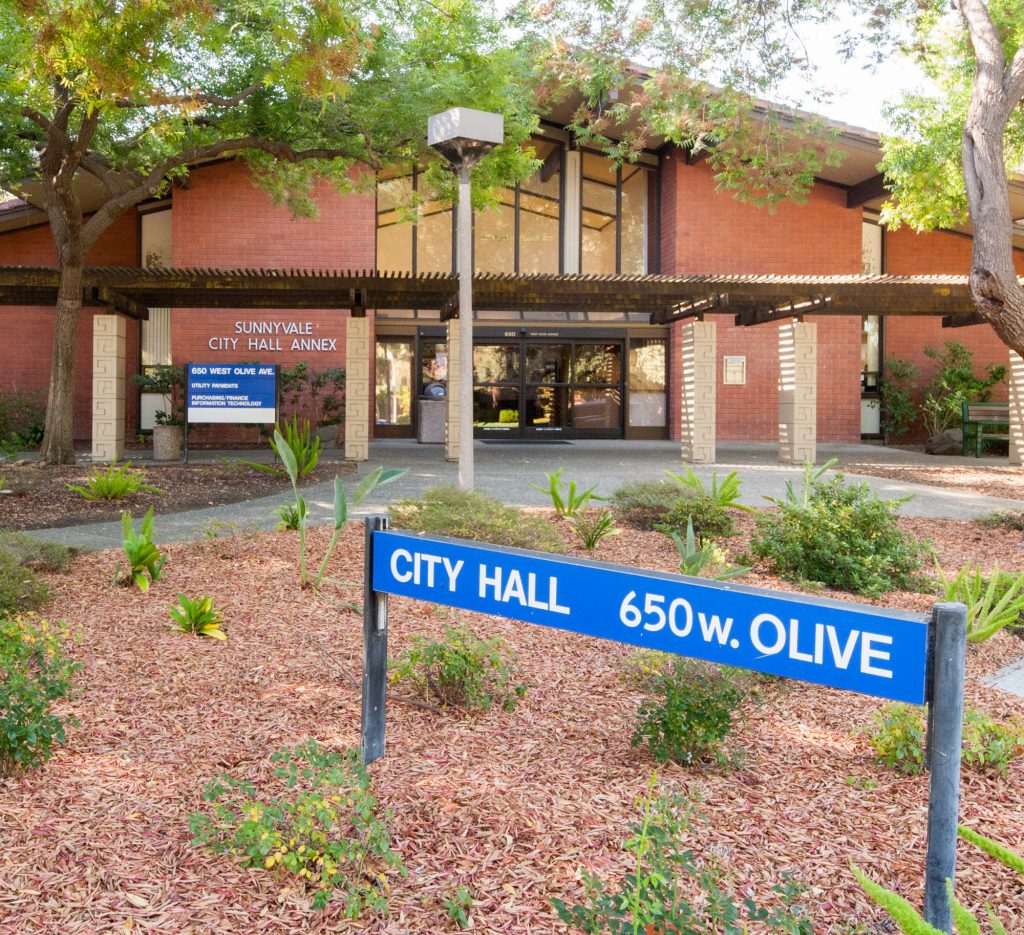The question of directly electing Sunnyvale‘s mayor has come up regularly since the mid-1980s and City voters have repeatedly given the idea a thumbs down. As is the current case, those proposals came from Sunnyvale City Council Members, not from the grass roots. Currently, the City’s mayor is appointed by the Council from its ranks.
Electing the mayor directly was first brought forward in Sunnyvale in 1983, according former Sunnyvale Council Member and Mayor John Mercer.
“Only one person was in favor of it and that was Larry Stone,” he said. It was one of the few things about which Mercer disagreed with his longtime friend and also former Sunnyvale Council Member and Mayor.
“At the time, my conclusion was between where he was and where we [Sunnyvale] were,” said Mercer. “We had a one-year mayor’s term and I thought we could improve on that. I wanted a two-year term, so it wasn’t being tossed around like a bowl of jellybeans.
“Sunnyvale had a growing reputation nationally and internationally,” he continued, “and the mayor needed to be someone who could speak on behalf of the Council, not just for themselves, and could speak [for the City] to the press.”
But Mercer didn’t think this required a directly elected mayor.
“If it ain’t broke, don’t fix it — the City was doing so well as it was,” he said. Continuing to say that a directly elected Mayor offered too much opportunity for big egos to seek self-promotion at the expense of the City’s reputation for good governance.
“Sunnyvale had a reputation for being exceptionally well run,” said Mercer, who, after his stint on the Sunnyvale Council, went on to draft the federal Government Performance and Results Act of 1993 based on his experience in Sunnyvale.
“That was because of the City Manager and City staff, and the Council stayed out of the way. We were smart enough not to mess up a good thing.”
In 1983, as would happen again and again, the committee appointed to study the question rejected the directly elected mayor. However, Mercer’s proposal for a two-year term for the Mayor subsequently did go on the ballot and voters approved it.
In 1987 the Sunnyvale Council, initially in a 4-3 vote, approved placing the elected mayor question on that year’s ballot. One supporter was former Sunnyvale and San José Mayor Ron Gonzalez.
But a month later its supporters dropped it because, as Gonzalez put it, they “didn’t want it to become the centerpiece” of an election where four Council seats were open, according to the April 28, 1987 Mercury.
The question was far from resolved, however. In 1990 then-Mayor Larry Stone — who was the City’s first two-year mayor — tried to get the Council to put a measure on the January 1991 ballot and then on the November ballot.
While Stone was launching his petition drive, the City Council voted to put a charter amendment on the ballot for a directly elected mayor.
Again, a committee appointed to prepare a ballot measure rejected the idea, instead proposing a ballot measure to retain the City’s appointed mayor system. Stone dropped his petition drive, he says, because opponents had made Stone himself the issue.
In November 1991, Sunnyvale residents voted in favor of the status quo.
In 2006, another charter review committee convened to consider an elected mayor among other charter changes. As in the past, the committee discarded the directly elected mayor proposal.
But like the phoenix, the question arose from the ashes and went to the voters again in 2011 — Measure A — when they trounced it by more than 60 percent.
Some of the arguments for directly electing Sunnyvale’s mayor are the same today as they were three decades ago.
“A directly elected mayor will have a lot more say in regional issues that affect us: climate, housing, transit, public safety,” said Council Member Mason Fong at the June 18 Sunnyvale City Council meeting. “These are issues that cross our city borders and require someone … to represent [the City] at that level and work across [government agency] lines.”
“In 1983, 80 percent of people surveyed couldn’t name the mayor,” said Stone. “How can you be effective if people don’t know who the mayor is?
“Every Council Member wanted to be mayor,” he continued. “It had nothing to do with leadership. It was just politics.”
Other arguments for the change are new, based on the dynamics of a Council elected by single-member districts.
Sunnyvale Council Member Glenn Hendricks has argued that an elected mayor would ensure one Council Member answerable to all residents.
“This change will allow all voters in the city to continue in the process of directly electing the mayor,” Hendricks said at a Council meeting last summer. Otherwise “six-sevenths of the city will not be involved in electing the mayor.”
Stone concurs.
“If Council Members are elected by district, it changes the entire political dynamics of the City,” he said. “Even when the job rotated, the mayor was elected by the entire City.”
Whether these arguments will be more successful with voters than they have been in the past remains to be seen. But no doubt, when Mercer makes his annual trip back to the Bay Area in December, he and his old friend Stone will continue to debate the question.
